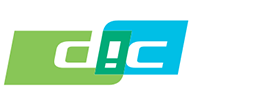Success Story
DIC Uses the Cloud for Speed and Flexibility

ABOUT DIC
DIC, which has the largest market share in inks, organic pigments, synthetic resins, and materials for electronics, recently took on the challenge of increasing cash efficiency and strengthening risk management, in light of its acquisition of foreign companies and other endeavors. The company chose the cloud-based, financial management solution Kyriba Enterprise to achieve these goals.
Using the Cloud for Speed and Flexibility
DIC (formerly Dainippon Ink and Chemicals) was established in 1908 as a manufacturer and seller of printing inks. It now offers a broad range of products based on organic pigment and synthetic resin technologies, which are the base materials of these inks. DIC has a long history of overseas operations: it first opened a branch in China in 1919, and is now developing its business through 174 group companies in 64 countries around the world (143 of these are in foreign countries). This means that its overseas sales is approximately 60% of its total business. One major turning point in DIC’s global expansion was its success in purchasing the graphic arts materials (inks, pigments, etc.) division of Sun Chemical, a major producer of these materials in the United States. It has subsequently engaged in expanding its overseas business further through proactive mergers and acquisitions.
“We have been able to introduce Kyriba Enterprise according to the schedule, and we believe that future phases will be realized quickly as well.”
DCI Corporation
According to Shuji Furuta, Head of DIC’s Finance Department, “One of our major financial issues was strengthening our financial standing by increasing the group’s cash efficiency. It was also necessary for us to respond to a variety of risks, such as currency exchange control, that resulted from the increase in the proportion of our overseas business.”
According to Furuta, the company formerly used spreadsheets to manually manage cash.
Kiminori Sakai, the Global Fund Manager in the Finance Department, reflected that “We were only able to determine our outstanding cash balance at month-end, and we were not given any indication from the head office as to how our money was performing during the month.”
Furuta went on to say that, “Although we were using cash pooling (automatic fund aggregation and distribution) in order to reduce our surplus funds so that we could increase our cash efficiency, we needed to be able to visualize our cash so that it could be efficiently managed.”
There are several methods available to generate information on account deposits. Furuta continued, “Up until now, we were obtaining the credit balance for each company on a monthly basis through an ERP (an enterprise resource planning system), but these reports are not timely.”
“Although you can obtain balances from a bank terminal, our company has many accounts, making it complicated to do so. We considered adopting a standalone TMS (treasury management system) directly connected to an ERP, but it would have been difficult to implement.”
The major impeding factors were cost and time. If each of the 170+ companies in the group adopted a standalone TMS, it would have cost hundreds of millions of yen and would require a significant amount of time to deploy. “The business environment changes all the time, and not only would this approach be inferior in terms of speed, but it also wouldn’t be able to adapt to future changes,” said Furuta. The company ultimately decided to adopt Kyriba’s global financial management system, Kyriba Enterprise. In addition to having been adopted by over 1,500 companies worldwide, including the United States, it is also used by major global companies in Japan. One of the major features of Kyriba Enterprise is that it is operated through the cloud. It can be used everywhere with Internet connectivity. Furthermore, it is easy to include additional bases and subsidiaries, as well as additional functionality. Compared to a standalone TMS, it is significantly cheaper and the installation process is easier.
Sakai said that, “We reached an agreement in December 2015, and the first phase was completed in April 2016. We saw how quick and high-quality it was, and this gave us faith to quickly advance to phase 2.”
Table of Contents
Quantitative Results
80%
SWIFT connection allows visibility into 80% of primary accounts.
¥150bn
3 year increase in risk management investment
+170
Number of companies integrated
Cash Visualization and Initiation of Automated Report Aggregation from Subsidiaries
At DIC, the first phase involved being able to visualize bank accounts. SWIFT (Society for Worldwide Interbank Financial Telecommunication), was used to accumulate information on the company’s different primary accounts on Kyriba Enterprise. This allowed for pooling between accounts, and we now had a concrete timeline for cash visualization for about 80% of the company’s primary settlement accounts.
“The second phase is to automate cash forecasts on a global level,” says Sakai.
Although account visualization allows the current cash status to be generated, cash management for tomorrow, next week, or next month is not possible. The company will link the group companies’ ERP and Kyriba Enterprise, which will allow debt and credit data, such as accounts receivable, accounts payable, and liabilities, to be incorporated, thus automating cash forecasting.
Adopting Kyriba Enterprise had quick, concrete results. “Up until now, cash pooling management involved transferring numbers from bank terminals or manually using spreadsheets sent from each company, but this is now unnecessary. Kyriba’s staff was incredibly helpful in providing explanations and support to us. We have been able to introduce Kyriba Enterprise according to the schedule, and we believe that future phases will be realized quickly as well,” says Sakai.
Furuta went on to say that DIC is now looking at strengthening governance using Kyriba Enterprise. “Our company published our three-year mid-term management plan called DIC 108 in February 2016. One of the basic strategies in the plan is the strategic investment of 150 billion yen in 3 years (through mergers and acquisitions, etc.). Financial management on a global scale is becoming more and more important. Using Kyriba will allow us to realize head-office-initiated governance.”










